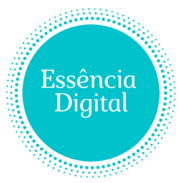As a freelancer, your portfolio is your single most powerful sales tool. It’s more than just a gallery of past work; it’s your professional showroom, a curated exhibit that proves your skills, showcases your style, and builds immediate trust with potential clients. When a client is considering hiring you, their first question will almost always be, “Can I see some of your work?” A strong, strategic portfolio is the only acceptable answer.
Whether you’re a writer, designer, developer, or marketer, a compelling portfolio can be the deciding factor that helps you stand out in a crowded market, justify your rates, and win higher-paying projects. This guide will walk you through the essential steps to build a portfolio that impresses clients and gets you hired—even if you’re starting with zero paid experience.
Why Your Portfolio is Your Silent Salesperson
Imagine a client has read your proposal and is interested. They are on the fence, weighing their options. Your portfolio is what pushes them over the edge. It works for you 24/7 to:
- Show, Don’t Just Tell: Instead of just claiming you have skills, you provide tangible proof.
- Build Instant Credibility: A professional portfolio signals that you are a serious business owner, not a hobbyist.
- Filter for the Right Clients: It attracts clients who appreciate your specific style and quality of work.
- Justify Your Rates: It demonstrates the value and expertise that warrant your pricing.
Step 1: Define Your Niche and Ideal Client
Before you create a single sample, you must answer two fundamental questions:
- What specific service am I selling? (e.g., “logo design for startups,” not just “graphic design”).
- Who is my ideal client? (e.g., “B2B SaaS companies in Brazil,” not just “businesses”).
Your portfolio must speak directly to this target audience. A portfolio for a wedding photographer should look and feel completely different from one for a corporate financial writer. A generic, “I can do anything” portfolio is unconvincing. A focused, niche portfolio tells your ideal client, “I am the perfect expert for you.”
Step 2: Choose the Right Platform for Your Showcase
How you present your work is just as important as the work itself. Your showcase should be professional, easy to navigate, and mobile-friendly.
- Option 1: A Personal Website (The Gold Standard) This is the most professional option, giving you complete control over your brand.
- Platforms: Squarespace and Wix are incredibly user-friendly. WordPress offers limitless customization. For a simple and elegant one-page portfolio, Carrd is an excellent choice.
- Must-Haves: A clear “Services” page, your portfolio gallery, a compelling “About Me” section, client testimonials, and an easy-to-find contact form.
- Option 2: Niche Creative Platforms These platforms have built-in communities and are respected within their industries.
- For Designers: Behance is perfect for detailed case studies, while Dribbble is great for showcasing quick visual snapshots.
- For Developers: Your GitHub profile, with well-documented projects, is your portfolio.
- For Writers: A professional blog on Medium or a curated profile on Contently can serve as an excellent starting point.
- Option 3: The Simple and Effective PDF Never underestimate the power of a beautifully designed PDF portfolio. It’s perfect for attaching directly to personalized proposals and gives you complete control over the viewing experience. You can easily create one using tools like Canva.
Step 3: Create 3-6 High-Quality, Relevant Samples
You do not need dozens of projects to impress a client. In fact, fewer, better pieces are far more effective. Quality trumps quantity every time. If you have no paid experience, you must create your own work.
How to Create Spec (Sample) Projects:
- Choose an Ideal Client: Pick a real brand you admire or invent a fictional company that fits your target niche.
- Identify a Problem: What could you improve for them? A poorly designed landing page? A lack of blog content?
- Create the Solution: Design the new landing page. Write the 500-word blog post. Create the social media graphics. Do the work as if it were a real, paid project.
- Be Transparent: Clearly label these pieces as “spec work” or “personal project.” Clients respect the initiative and skill, not whether you were paid for it.
Step 4: Tell a Story with Case Studies
Don’t just show an image or a block of text. For each portfolio piece, provide context. Tell a mini-story that demonstrates your strategic thinking. This is what truly sells your services.
Use this simple framework for each project:
- The Challenge: What was the client’s (or fictional client’s) goal or problem? (e.g., “A local coffee shop needed a new logo to appeal to a younger, more modern demographic.”)
- Your Solution: What did you do? Briefly describe your process. (e.g., “I developed three distinct brand concepts, focusing on clean typography and a warm color palette. After a feedback round, we refined the chosen concept.”)
- The Result: What was the outcome? If you don’t have real metrics, focus on the strategic intent. (e.g., “The final logo is versatile, memorable, and effectively positions the brand as a modern, high-quality coffee destination.”)
Step 5: Build Trust with Testimonials and Recommendations
Social proof is incredibly persuasive. Even without clients, you can gather endorsements that build trust.
- Ask Former Colleagues or Bosses: Request a LinkedIn recommendation that speaks to your work ethic, reliability, and skills.
- Ask a Professor or Mentor: If you’re a recent graduate, a recommendation from a respected professor can be very powerful.
- Do a Small Project for a Friend: Offer to help a friend with a real project in exchange for an honest testimonial about the experience.
A simple quote like, “João was professional, communicative, and delivered exactly what we needed on time. I would highly recommend him,” can make a huge difference.
Step 6: Write a Compelling Bio and Call to Action
Your portfolio should have a brief introduction that quickly tells visitors:
- Who you are.
- What specific problem you solve (your value proposition).
- Who you solve it for (your target audience).
End with a clear and confident Call to Action (CTA), such as “Ready to elevate your brand? Let’s work together,” with a clear link to your contact page or email.
Final Thoughts: Your Portfolio is a Living Document
Your portfolio is not a static trophy case; it’s a dynamic, living document that should grow and evolve with your career. Review it every few months. As you complete new, better projects, swap out your older or less relevant pieces.
Building a portfolio from scratch takes effort, but it is the most crucial investment you can make in your freelance business. It is your proof, your story, and your ticket to landing the clients you dream of. Start building today.
“Once your portfolio is ready, it’s time to write proposals that sell your freelance services.”

